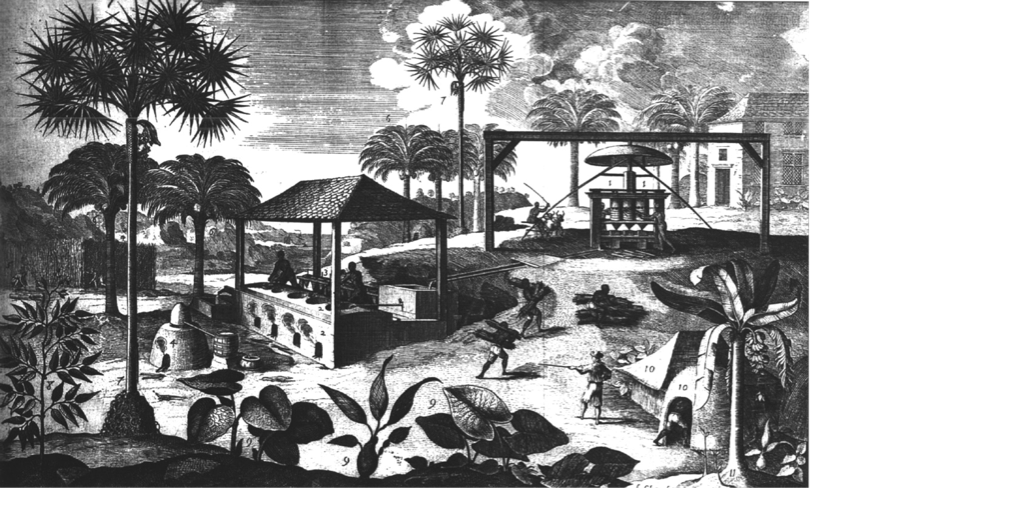Sign up for FlowVella
Sign up with FacebookAlready have an account? Sign in now
By registering you are agreeing to our
Terms of Service
Loading Flow

05
The contrasting themes and traditions in Classical and Baroque Sculpture

03
Sugar Plantations
One of the major contributions to the New World was its intensive and productive sugar plantations, that allowed for social, economic, and political development. Colonial Brazil centered their lifestyles around the sugar mill (eugenho). Unlike other crops, sugarcane required extensive processing to yield molasses or refined sugar as a profitable export. As sugar production skyrocketed so did the importation of African slaves into the sugar-producing zones. More black slaves were being shipped over from Africa so that they could tend the fields and allow the economy to flourish. A detrimental aspect of this was that in 1645, before widespread sugar production had taken root, Barbados counted 5,680 African slaves; by 1698, with sugar production having grown by more than 5,000 percent, its slave population exceeded 42,000. These crops grow at an efficient rate which produced large amounts of materials to make more expensive goods for sale. Thus promoted transatlantic trade between regions who desired the value of sugarcane.
How Sugar Plantations Impacted the New World
06
